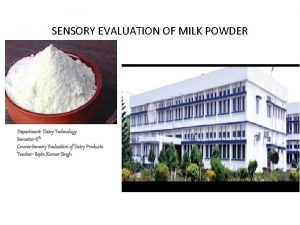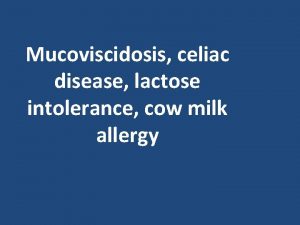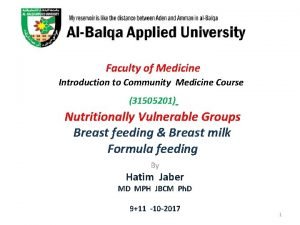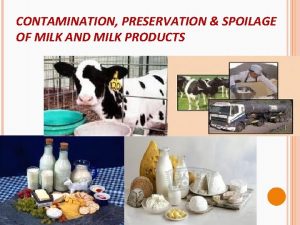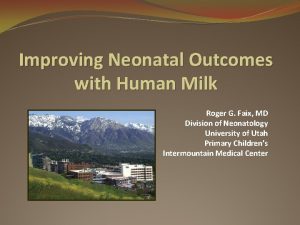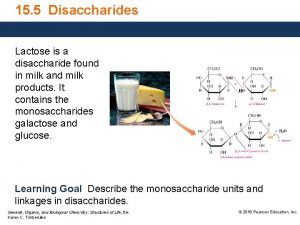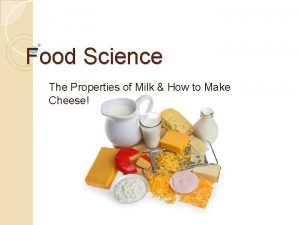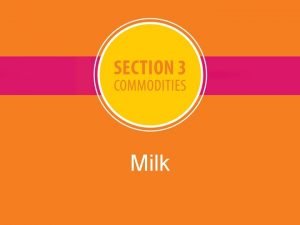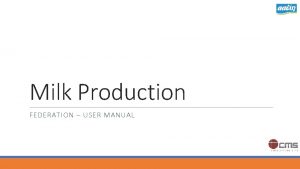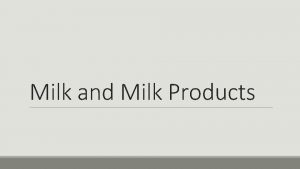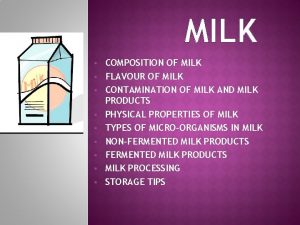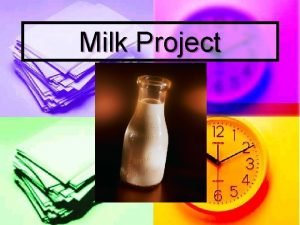Food Science The Properties of Milk How to








- Slides: 8

Food Science The Properties of Milk & How to Make Cheese!

Milk is a Colloid Milk is a white liquid produced by the mammary glands of mammals It is the primary source of nutrition for young mammals before they are able to digest other types of food Though it appears to be a homogeneous mixture, milk is actually a colloid, a suspension of emulsified fats and proteins in a suspension of water and dissolved sugars, salts and minerals Because up to 87% of this mixture is water, light is easily able to pass through milk and gives it the bright translucent “glow” called the Tyndall Effect

Milk Macromolecules � The major proteins in milk are casein, derived from the Latin caseus, from which the word “cheese” also originates, and whey ◦ Casein is insoluble and forms “micelles” in aqueous solution; denatures and coagulates through renneting and acidification ◦ Whey protein is soluble in aqueous solution; denatures at high heat � The major carbohydrate in milk is lactose (a disaccharide of glucose and galactose), as well as smaller amounts of other oligosaccharides � The main lipids in milk are butterfat triglycerides � Milk also contains dissolved ions and minerals

The Nature of Denaturation � When proteins are exposed to a denaturing agent, their 3 -dimensional structure is affected � Tertiary structure is “unraveled” into strands of amino acids (polypeptide chains) � Amino acids retain polarity/nonpolarity and are spontaneously influenced by presence of water to renature

The Process of Making Cheese �Making cheese involves four steps: ◦ Acidification (dropping p. H denatures casein) �This creates fragile curds (early cheese) that separate from water ◦ Coagulation (renneting or heating) �Rennet is an enzyme found in calf stomachs, hydrolyzes casein and traps fat globules in the formed structure �Heating (for more delicate cheeses) at 110 -120 ⁰C ◦ Dehydration (separating curds from whey) �Coagulated milk solids are insoluble and are separated from whey, water, and milk sugars ◦ Salting/Flavoring (removing water via osmosis) https: //www. youtube. com/watch? v=bu 4 Yhxk. Igos �Cheeses are aged weeks or even years, depending on variety

Acidification via Fermentation �A simple way of making cheese is to rely on bacterial cultures that undergo lactic acid fermentation to drop the p. H in milk ◦ Lactococcus lactis are bacteria that are used extensively by dairy producers �Consume the lactose sugars in milk in the absence of oxygen for the production of ATP �L. lactis are also used in sour cream, buttermilk, cottage cheese, kefir, and also cucumber pickles and sauerkraut

Composition of Cheese �Because the insoluble milk solids are separated from the soluble components, cheese has a high content of ◦ ◦ �It Protein Saturated Fats Cholesterol Calcium and Sodium has a low content of carbohydrates, which are soluble

Follow-Up Questions �Based on what you’ve learned about colloids, what would happen if fresh milk were allowed to sit for a period of time? �As you cook an egg, the albumin protein changes from a clear liquid to a solid white. What is happening?
 Sensory evaluation of milk and milk products
Sensory evaluation of milk and milk products Milk for toddlers with milk allergynon dairy
Milk for toddlers with milk allergynon dairy Human milk vs cow milk
Human milk vs cow milk Contamination of milk and milk products
Contamination of milk and milk products Difference between human milk and cow milk
Difference between human milk and cow milk A disaccharide found in milk and milk products
A disaccharide found in milk and milk products Colligative properties of milk
Colligative properties of milk You are my favorite subject
You are my favorite subject Unit 2 food food food
Unit 2 food food food
